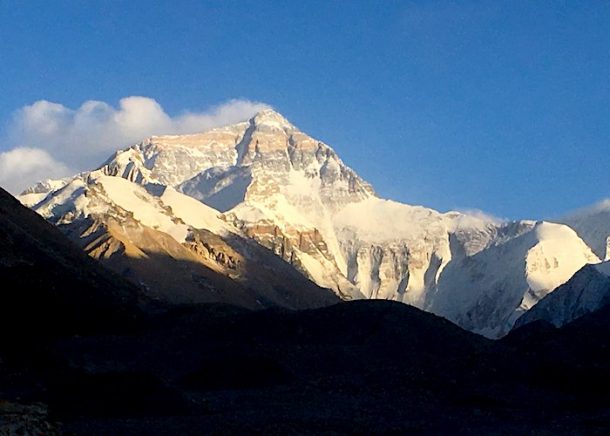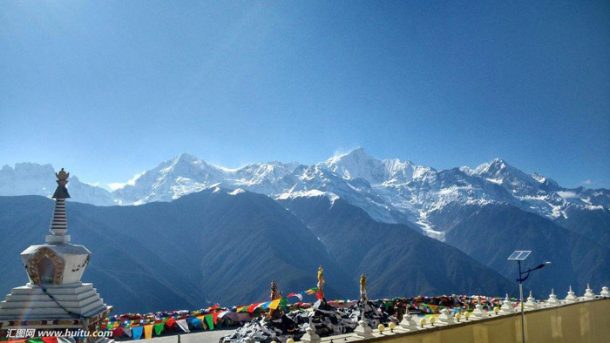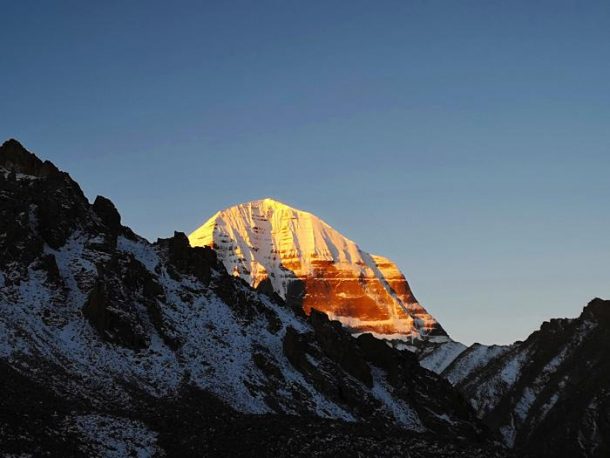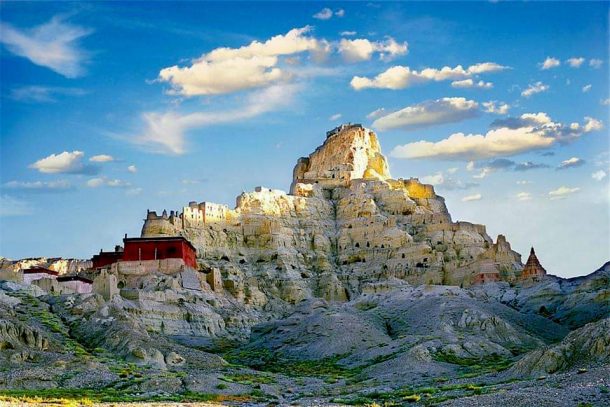Tibet Autonomous Region vs. the Tibetan Area
There is a big difference in the Tibet Autonomous Region (TAR) and the Tibetan Area when it comes to travel to Tibet. When you say Tibet, most people think you are referring to the TAR.
However, there are also areas outside the TAR where Tibetan people live, which were once parts of what was originally Tibet during the days of the Tibetan Empire. And there are several reasons why you need to know the difference between them, not least being the need to have or not have the Tibet Travel Permit when traveling.

By understanding which area your vacation comes under, you can better plan how you will travel and where to go in that area, and can better understand the advice of our expert Tibet tour advisors.
Table of Contents
What is the Tibetan Area?
The Tibetan Area actually covers the entire Tibetan Plateau where the Tibetan people are native inhabitants. This includes all of the Tibet Autonomous Region; a large part of Qinghai Province; and parts of southwest Gansu, northern Sichuan, western Sichuan and the far northwest of Yunnan Province. Originally, Tibet was split into three regions: U-Tsang, Kham, and Amdo.

According to a modern-day map, U-Tsang would be in what is now western and Central TAR, while Amdo covered the northeast of the TAR and what is now Qinghai and part of Gansu, and Kham covered the easternmost part of the TAR and western Sichuan and Northwest Yunnan Provinces.
Where is the Tibet Autonomous Region?
The Tibet Autonomous Region, or TAR as it is often known, is the area of Tibet within the confines of the local boundaries with Qinghai, Yunnan, Xinjiang, and Sichuan and the borders with Nepal, India, and Bhutan. The TAR is actually only made up of around half of the total area of the Tibetan plateau, and around 60 percent of Tibetans actually live outside the TAR.
The region is divided into seven major political areas, which include Lhasa, Shannan (or Lhoka), Nyingchi (or Nyintri), Shigatse, Nagqu (sometimes Nakchu), Chamdo (alternatively known as Qamdo), and Ngari (or Ali).

For most tourists to the TAR, tours are most popular to the areas of Lhasa, Shigatse, and Nyingchi, with small excursions in Ngari, Shannan, and Chamdo. Few people visit Nagqu in the north of the TAR, as the climate can be almost inhospitable, and there are few roads leading into the area. Of all of the areas in the TAR, Lhasa and Shigatse are the most populous, with Ngari and Nagqu being the least populated in terms of people per square kilometer.
The TAR has the best “Tibetan Experience”
While there may be only just over half of the population of Tibet living outside the TAR, and around 50 percent of the total area of the Tibetan Area being outside the TAR, for the best Tibetan experience, the TAR is the best place to visit. True, there is more paperwork involved in getting to the TAR, but with such stunning sights as Mount Everest, Mount Kailash, Lakes Yamdrok and Namtso, and the beautiful Tibetan capital, these are things you cannot experience outside the TAR.
The areas outside the TAR may be very Tibetan, but they are more heavily influenced by Han and Hui cultures, while the TAR has more amazing highlights for you to experience. The tour from Lhasa to Kathmandu is an amazing overland experience that takes you to the very roof of the world, and the stunning views of Mount Everest, before showing you through one of the world’s most stunning scenic areas in Gyirong valley and sending you across the border in to Nepal to experience the exotic capital, Kathmandu.

Tours run around the city of Lhasa, known as the “City of Sunshine” because of its huge number of sunny hours per day throughout the year, even in the monsoon season. There is no city like Lhasa, and it is the center of Tibetan culture and religion. And off to the west, lies the world’s most sacred mountain, Mount Kailash, with its awesome 3-day kora trek, one of the most spiritual journeys you can take in the entire Tibetan Area. With so many more sights and experiences of the authentic Tibetan culture and religion, not to mention the stunning mountains, beautiful lakes, and vast plains and prairies, the best place to come is the TAR if you really want to experience Tibet at its finest.
Documentary Requirements for the TAR and the Tibetan Area
For those planning a trip to the TAR, there are additional documents that you will need, which do not apply to the Tibetan areas outside the TAR. In those areas, you merely need to have your passport and Chinese Entry Visa, and you can travel around the four areas of Tibetan habitation as you wish, with no need for guides and private driver.
For the TAR, you will need to have your passport and Chinese Entry Visa, as well as the Tibet Travel Permit, which is required to get into the TAR and travel in the area of Lhasa. For those traveling further abroad in Tibet, you will also need certain other permits, depending on where you are going.
However, while this may seem to be a lot of hassle to arrange all the permits, they are all arranged for you by the tour operator, so you actually do not have to do anything. The tour operator also arranges all your travel and accommodation, so in reality, it is easier to arrange a tour of the TAR than arrange your own tour of the other Tibetan areas.
Travel to the TAR and the Tibetan Area
Getting into the Tar is relatively easy, and can be done from a huge number of cities across China, as well as direct from Kathmandu in Nepal. Trains run from seven gateway cities to the TAR – which includes Guangzhou, Beijing, Shanghai, Chengdu, Chongqing, Lanzhou, and Xining – while flights can be taken from more than a dozen cities across China, including Chengdu, Beijing, Chongqing, Xi’an, and Shanghai.
Traveling to the four other Tibetan areas can be done by road, rail or flights, and how you get there is entirely up to you. For Qinghai, flights, and trains run to Xining, the provincial capital, while for Sichuan, you can fly or get a train to Chengdu, and then find your way west from there.
For Gansu and Yunnan, the Tibetan areas can be a little more difficult to reach, but are not too hard, with regular trains and buses from the major cities to the Tibetan prefectures within the provinces.
Recent Posts
Can Tourists Visit Tibet?
Exploring the Beauty of Tibetan Handicraft
The Ultimate Guide to Tibet Tours, Travel, and Trekking Adventures
All Categories
- About Tibet
- book a Tibet tour
- Buddhism Practice
- Budget Tour
- China-Tibet Train
- Customized Tibet tour
- Historical Sites
- Hot Springs in Tibet
- News
- Photography in Tibet
- Tibet attraction
- Tibet Group Visa
- Tibet Motorcycle Tour
- Tibet Small Group Tours
- Tibet Tours and Tibetan Tour Guide
- Tibet Train
- Tibet Travel FAQs
- Tibet Travel Information
- Tibet Travel News
- Tibet Travel Permit Update
- Tibet Travel Prices Rises
- Tibet Trek
- Tibet Trekking Tour
- Tibet weather and climate
- Tibet Wildlife animals
- Tibet Winter Tour
- Tibetan Buddhism
- Tibetan Cultural Features
- Tibetan Culture and Poeple
- Tibetan Festivals
- What to see in Tibet


